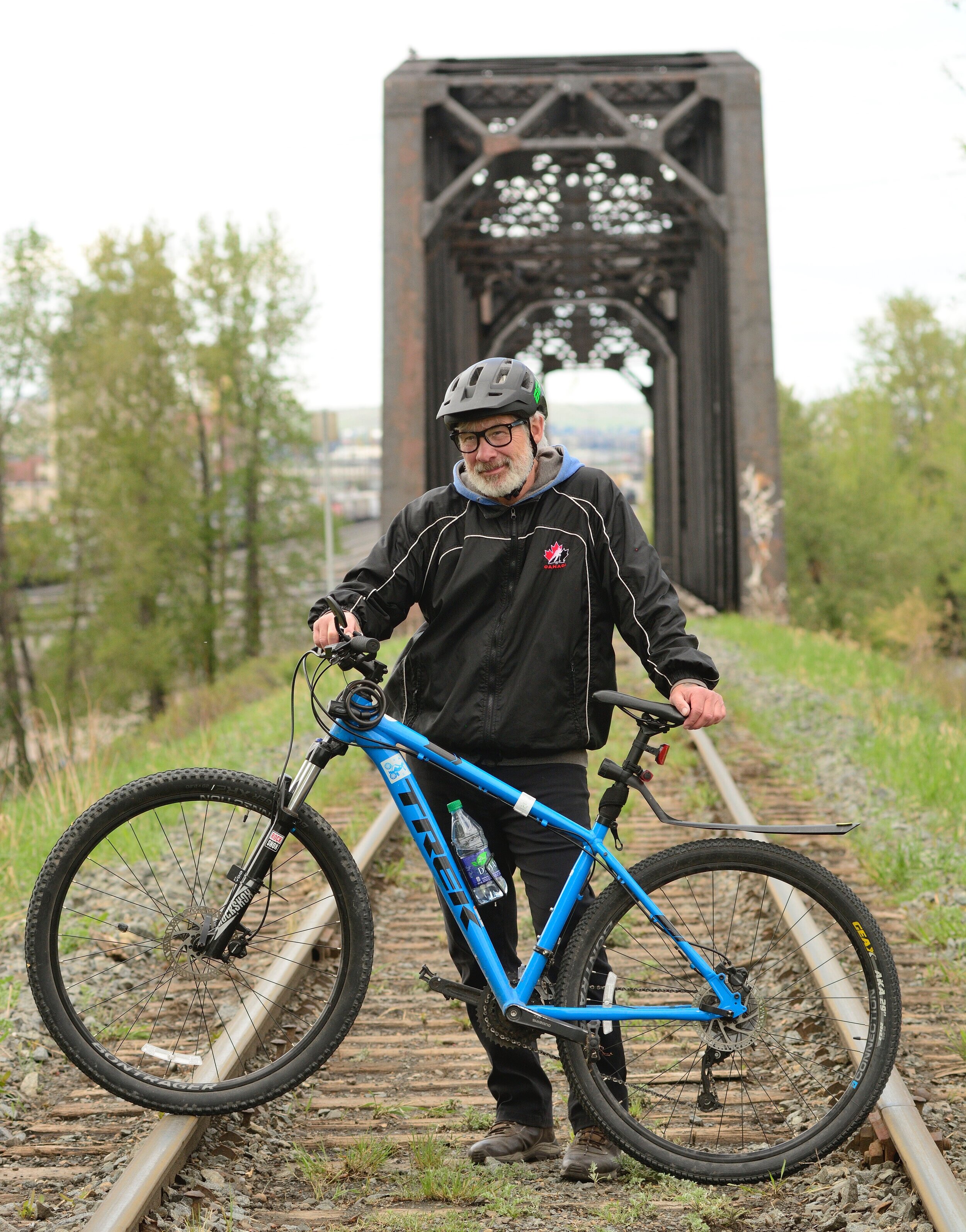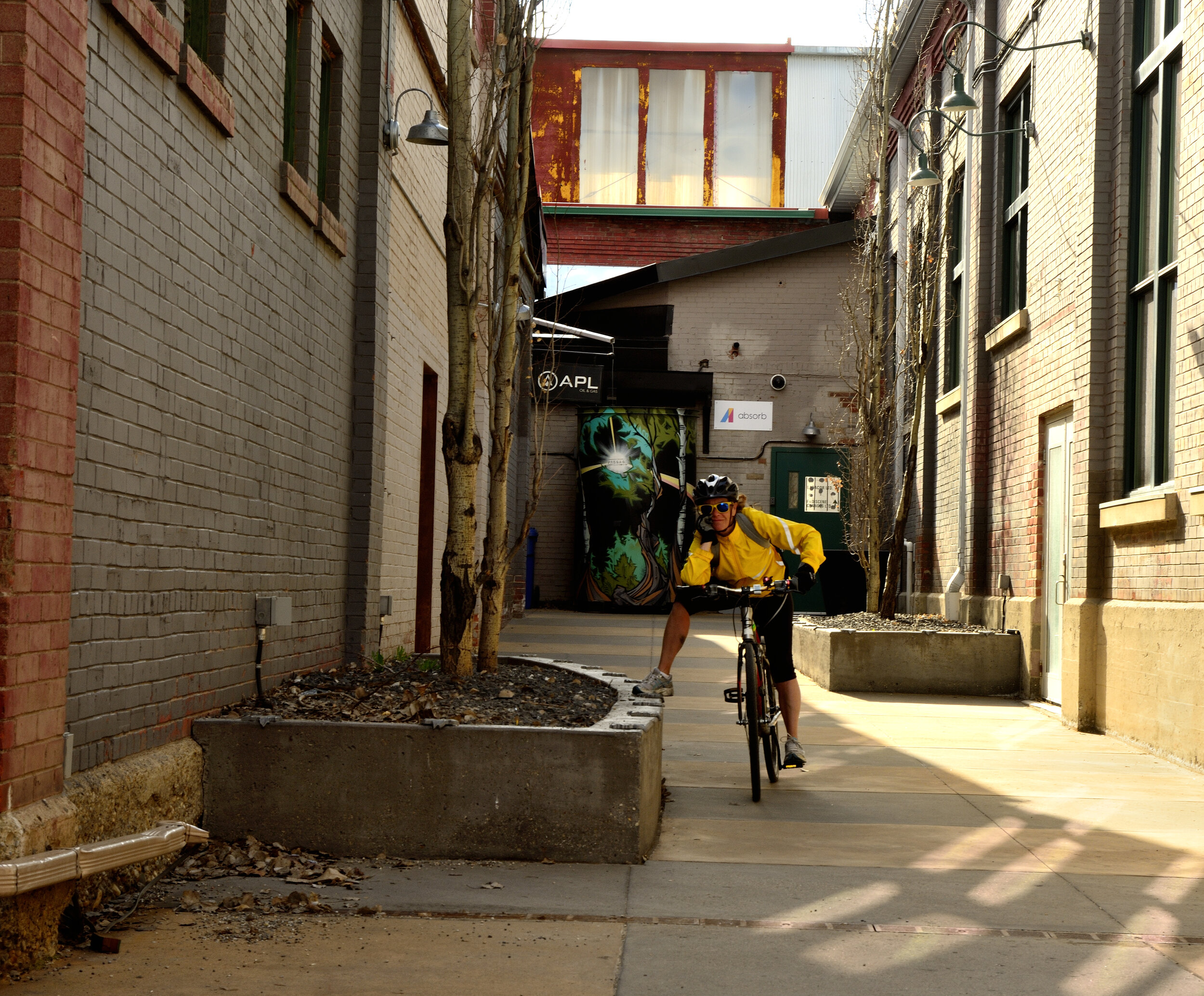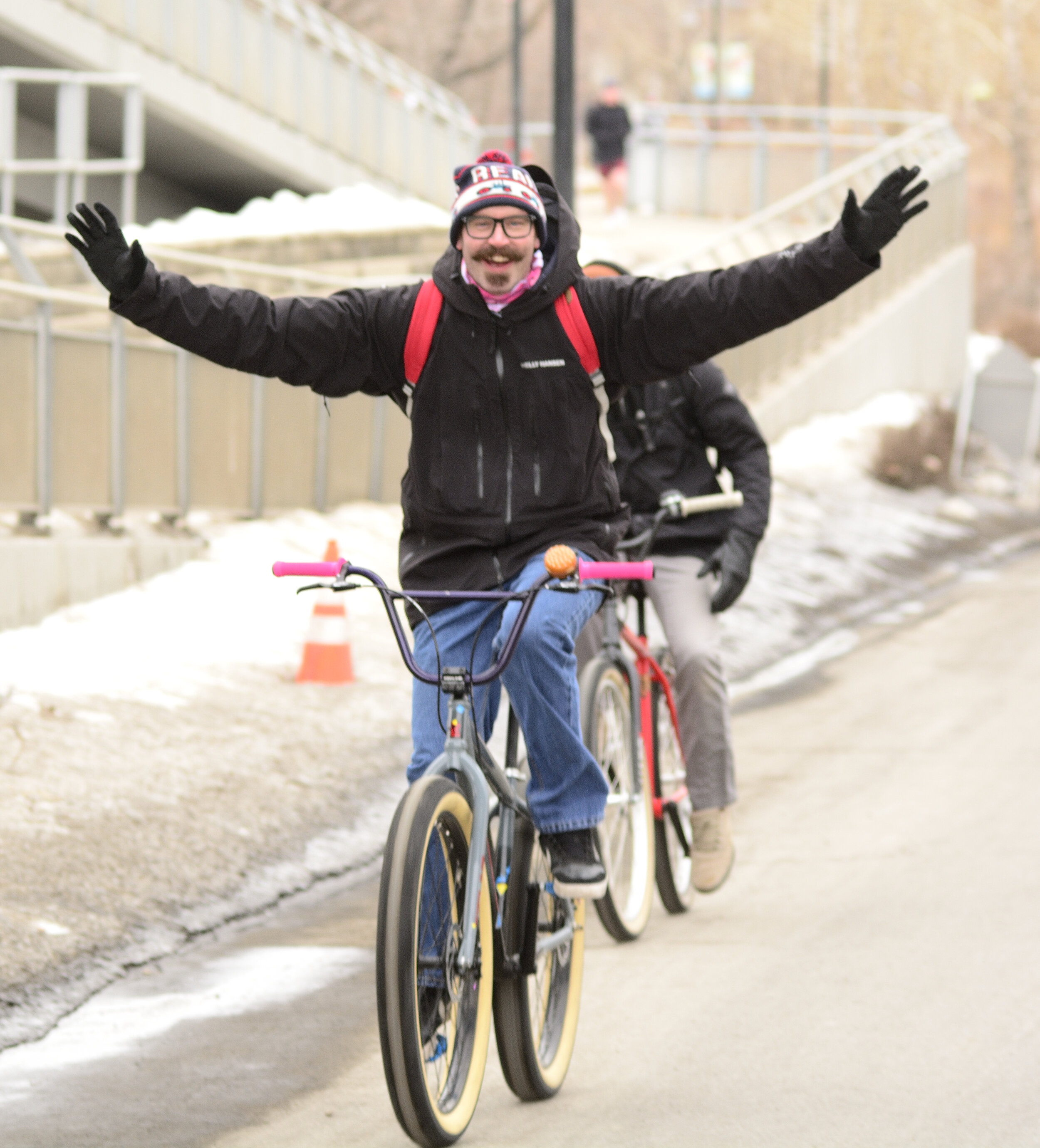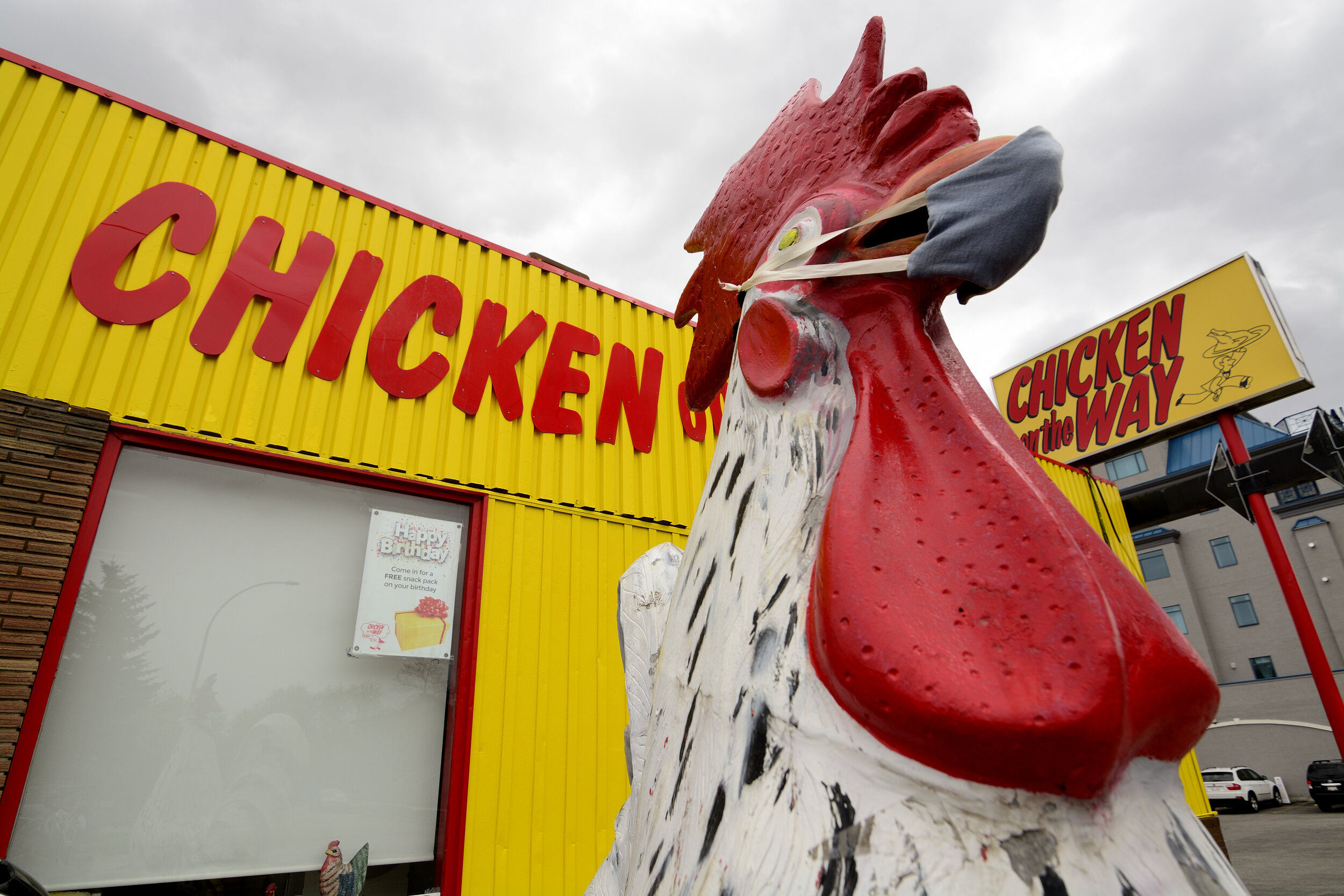People in Healthy Places
people in healthy places
Words and photos by: Roxanne LeBlanc and John Campbell
What began as a photography project documenting empty commercial streets soon morphed into something different. Roxanne and John were moved to connect with other Calgarians: if they weren’t in commercial streets, where were they? What were they doing? How were they finding joy in tough times? John and Roxanne set out on bikes to photograph Calgarians as they found them, in the era of COVID-19. “People in Healthy Places”, a photo essay in 8 parts, is their story. It challenges us to consider our next moves as a city. What do we see that we would like to keep? What inequities has this pandemic laid bare, and how can that drive us to do better? How do we contribute to a COVID recovery strategy that prioritizes health and equity? More on this and on Sustainable Calgary’s COVID response work in the coming weeks. In the meantime, we are pleased to share this first instalment of People in Healthy Places.
Words + Photos by: Roxanne LeBlanc + John Campbell
By the midpoint of March 2020, Calgary had become a changed place. Rush hours were no longer, vehicle traffic slowed to a trickle. Wherever you turned, it seemed, people were afoot or up on two wheels, or engaged with family activities. Life’s pace had broken stride.
Like most of the world, the novel coronavirus ground Calgary to a halt through the spring of 2020. Rampant unemployment and the lockdown of schools had far-reaching outcomes we are still grappling with: economic hardship and uncertainty; inequities along the lines of gender, socio-economic status and race; collective grief; but also a resolution to find meaning, direction, even joy, in the midst of it all.
During those months we set out on bikes to photograph Calgarians as we found them, in the era of COVID-19.
What we witnessed first hand as we travelled through the city is that some families had more time to spend together, and many turned to physical activities and simple pleasures in the absence of work, community events and normal pre- COVID social occasions.
From left to right, Layla, Clara, and Youssef Mansour exude confidence, charisma and style on their scooters while dad Wael Mansour beams with pride.
It seemed ironic that the pandemic had actually drawn many people into positive lifestyles: walking and cycling paths overflowed with freshly created outdoor enthusiasts.
Practically every bike shop in town featured hours-long lineups for simple sales and service appointments. Indeed, CTV Calgary quoted Krista Robinson, manager of MEC Calgary’s south store location, as saying, “This time last year during a certain period we sold 90 kids runner bikes. For the same period this year we’ve sold 900.”
In response to the increased foot traffic on already very popular routes such as the Bow River Pathway, City of Calgary officials blocked off some now lightly used traffic lanes on Memorial Drive to give pedestrians and cyclists extra room. The new bike and pedestrian lanes along Memorial as well as in other areas of the city proved to be very popular as people who might otherwise be at school or work took to them in droves. Unfortunately the locations neglected some neighbourhoods with higher needs, such as those with apartment dwellers or persons with disabilities who might be disproportionately affected.
COVID-19 drastically reduced motor vehicle traffic on Calgary city streets as vehicles ordinarily carrying commuters were now parked at home for the duration of the pandemic. However, with time on their hands many Calgarians became avid walkers and cyclists. To accommodate the growing numbers of bodies on trails and sidewalks, the City of Calgary closed off two driving lanes on normally busy Memorial Drive along the Bow River and turned them into foot/bike paths. Similar lane repurposing measures were taken in other municipalities.
COVID-19 had shuttered workplaces and schools as well as social outlets such as rec centres, libraries, playgrounds, pubs, restaurants and (for a time) even provincial campgrounds but being resourceful creatures, people found other diversions. Families took advantage of their down time and need to physically distance by gardening and reshaping their immediate surroundings with spring DIY projects.
The novel coronavirus pandemic stirred something deeper in the hearts of Calgarians as they seemed to put effort into simply being “nicer” to one another. Passing on streets or paths people would smile at each other even as they provided the requisite two-metre spacing—as if to say, “You’re okay and I’m okay but we have to keep each other safe.”
In social but still responsible fashion, Cory Nespor (front left) and Kelley Johnsgaard (front right) entertain friends Leela Jacobs (behind, left) and Sam Mendoza (behind, right) on the outdoor patio of “nvrlnd,” a non-profit art collective with studios on the site of the former Shamrock Hotel. Nespor and Johnsgaard are nvrlnd’s founders. Its purpose is to “create an open-minded, affordable and safe art space for artists.” The facility was busier than ever during the COVID-19 shutdown, and the co-founders suggest that these anxiety-filled times created a need in people for the reassuring calm of art.
Cheery signs painted on windows or words in chalk left on sidewalks conveyed messages of hope and support to friends, neighbours or even unknown passersby.
Signs in homes and in public spaces conveyed touching and at times comical messages of hope and support to all through COVID-19.
The spirit of voluntarism also spiked. The Calgary Herald reported how it took just hours for a Facebook group called YYC COVID-19 Volunteers, to attract hundreds of Calgarians dedicated to helping community members affected by COVID-19.
What we learned in our city-wide travels is that it’s not possible to overstate the damage the pandemic has wreaked on “normal” life. The closure of shops and offices accounted for nearly 55,000 job losses, according to Conference Board of Canada figures.
City of Calgary Transportation Data provides corollary numbers reflective of the unemployment figures. As of the third week in March, C-Train and Bus ridership declined by 80 percent. During the same time period, the volume of weekday motor vehicle traffic had dropped by 54 percent compared to the first weeks in March 2019. Calgarians had not all been equally affected, and we still don’t fully understand the degree to which this pandemic has disproportionately affected Canadians of colour and women.
But as we cycled the city something else struck us as ironic. COVID-19 had inadvertently produced some of the very results we aspire to, to improve health and well-being: that is, a more physically engaged population with people displaying less reliance on the automobile and a deeper commitment to activities in their own spaces. With at least 63% of Canadian deaths attributed to chronic disease linked to sedentary lifestyles, this can be life-saving.
Precisely one year prior to the arrival of the COVID-19 pandemic, Sustainable Calgary published a 36-page booklet, Healthy Places: Designing for Health in Alberta, that champions active lifestyles and illustrates how the actual brick and mortar designs of neighbourhoods can have dramatic effects on the physical and spiritual well being of a community. Better urban planning creates more liveable communities: this is the core message found in Healthy Places, which envisions communities purpose-built for human-powered mobility with greater opportunities for socialization.
In Mission, a man who calls himself Jimmy DancingOyster shares the neighbourly value of old fashioned conversation blended with a very contemporary need for physical spacing and eventually breaks into song: “Lord of the Dance.” Indeed, one of the unanticipated consequences of COVID-19 is that people often anecdotally reported random acts of kindness and social pleasantries from complete strangers on a scale they’d never quite experienced in the pre-COVID era.
Healthy Places sets out goals, strategies, and positive outcomes, and places calls to action from designers, legislators, and civic leaders to help create better, more equitable and sustainable communities where the movement of people is decidedly less car-centric.
In a sense, many Calgarians were offered a glimpse of that world during the peak of COVID-19. The pandemic imposed the disciplines of physical distancing and self-quarantine, but in response many Calgarians took to walking, cycling, playing, gardening and simply spending time with their immediate families or small cohorts of friends.
As we consider next steps for recovery and relaunch, perhaps the COVID experience can help us aspire to the kinds of communities that put people into Healthy Places - and highlight how critical it is that they are accessible to those who need them most.
want to rebuild better?
Next week’s blog talks COVID response, equity, and how you can weigh in with your city, province and country on the future we want to build together. Stay tuned!










